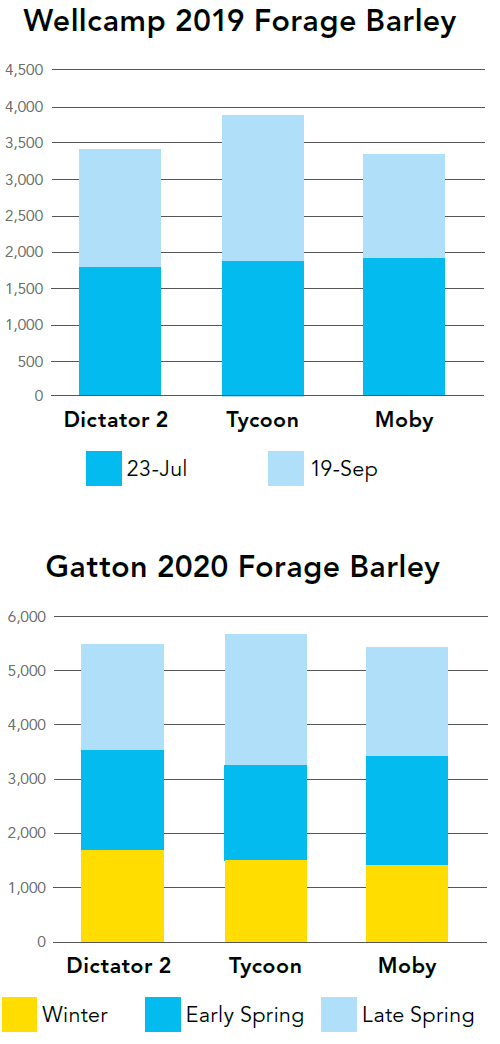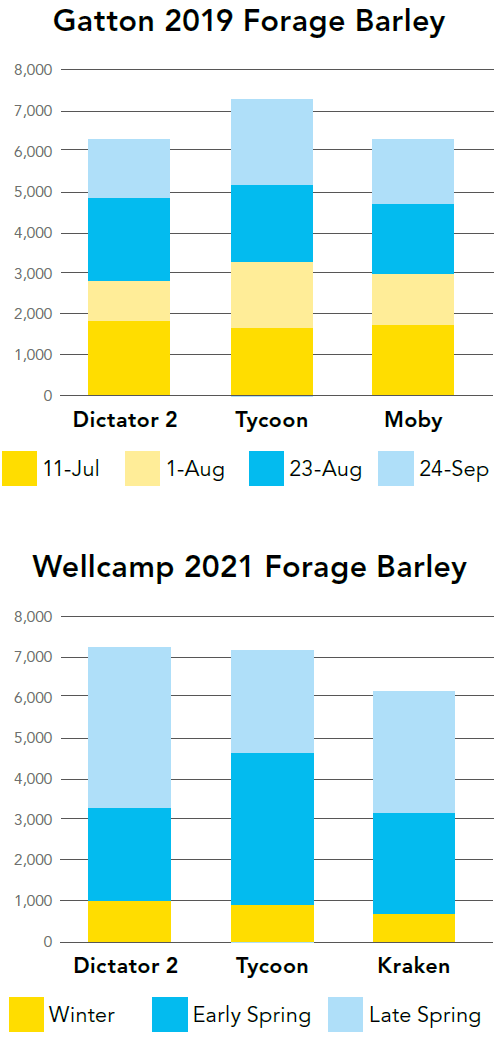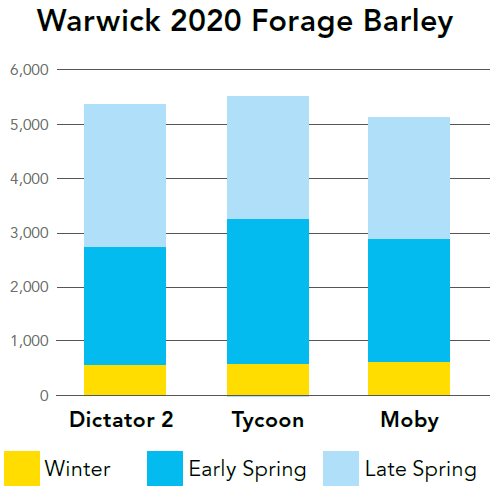Download a copy of the Tycoon forage barley factsheet.
Tycoon is bred and developed through QDAF in partnership with the GRDC for the northern forage cereal zone in central and southern Queensland and northern NSW. It is a significant improvement over the popular Dictator 2 variety with higher yield potential, improved disease resistance and is a white seeded, awn-less variety.
Key Features:
- Forage cereal growing areas of northern NSW, southern and central Queensland
- Warm-temperate and sub-tropical climate zones
- Quick autumn, winter, and spring feed
- Dairy, beef cattle and sheep grazing
- Silage and hay production
- Replaces applications for Dictator 2 forage barley and has a similar maturity date.
Key Benefits:
Up to 15% total yield improvement over Dictator 2
- Greater early vigour and recovery from grazing
- Improved winter and early spring feed – when it’s needed most
- Erect growth habit for high utilisation and harvest recovery
- Awn-less (hooded) variety for better stock acceptance compared to Mackay and Shepherd
- White seeded, two-row variety to assist with reduced contamination concerns in barely cropping areas
- Highly resistant to leaf rust, moderately resistant to powdery mildew
- Not suited to southern Australia due to susceptibility to scald (from Howlong trials)
- Bred, developed, and selected in Queensland for local conditions.
Performance:



Seasonal yield of five fully replicated trials conducted 2019-2021. All figures are as kg DM/ha. Wellcamp 2019 had only two harvests, Gatton 2019 had four harvests. April or early May sown in each case at 80kg/ha
Applications:
Tycoon forage barley is suited to cultivated sowing and to no-till systems. Mid-March to early June is the main sowing window. Fertiliser and soil fertility have similar requirements to other cereals and grass pastures. Similar herbicide techniques and systems may be used as per conventional barley. Pre-emergent options may be useful in some circumstances.
A sowing depth of 15-30mm is recommended. Sowing deeper than 40mm may result in reduced emergence.
Grazing:
Forage barley should be grazed once it achieves approximately 300mm in height. Early grazing is useful to encourage tillering and thereby improve prospects for subsequent dry matter production.
Repeat grazings are possible each time the crop returns to the desired height. To achieve rapid regrowth, grazing down to no lower than 75-100mm is recommended. If grazed below this point, e.g. 40mm, regrowth will occur, but it will likely be much slower.
The strategic use of nitrogen fertiliser will boost crop recovery and, coupled with correct grazing management will provide the highest yields provided growing conditions allow. It will offer multiple grazings until the production of the first node (Z31).
Harvesting:
Like other cereals, Tycoon will not regenerate after hay cutting once the plant has moved into its reproductive phase and the uppermost node carrying the developing seed head is removed by grazing or harvesting.
A later season sowing date may providing grazing and a moderate hay cut or, instead allow for one larger hay/silage cut. If hay or silage cutting is not possible or desired, the awn-less nature of the seed head allows complete grazing, irrespective of the time of season. If the plant runs to head it produces more palatable grazing, hay, or silage than conventional awned barleys, without the associated problems by impaction of awns in the mouth and gut and damage to eyes.
Disclaimer: The information presented in this brochure is from official and other sources and is considered to be reliable. It is provided in good faith and every care has been taken to ensure its accuracy. Barenbrug does not accept any responsibility for the consequences that may arise from the acceptance of recommendations or the suggestions made.



